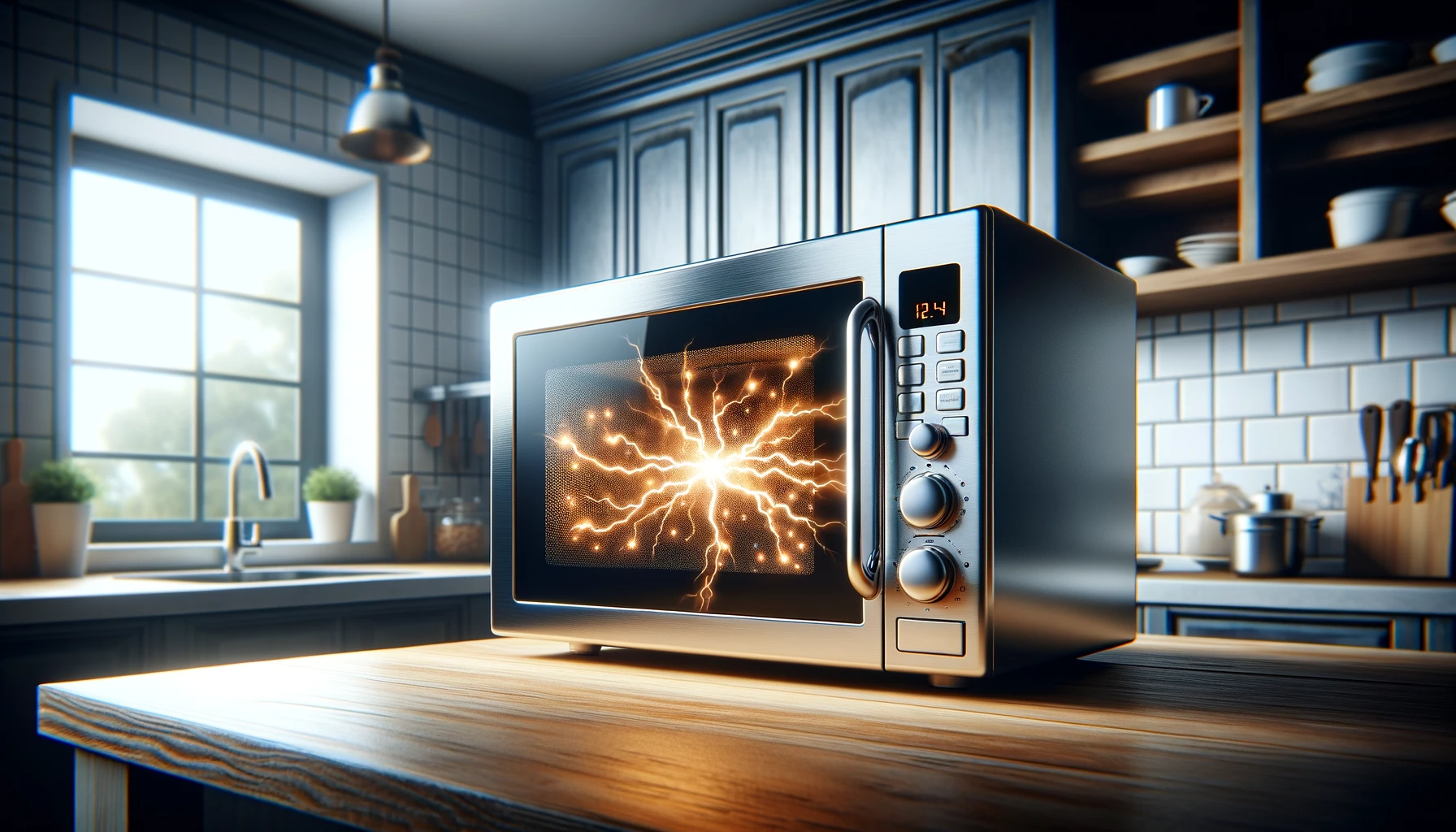It’s your pal Mikey, back at it with another kitchen deep-dive, this time into a topic that might seem mundane but is as crucial as the perfect seasoning: microwave wattage. Ever wondered why some microwaves turn yesterday’s pizza into a crispy delight, while others leave it soggy? The secret’s in the wattage.
So, let’s embark on a flavorful journey to uncover what is the average microwave wattage, and why you should care. This knowledge can elevate your microwave game from reheating rookie to zapping Zen master.
The Heartbeat of Your Microwave: Wattage Explained
Imagine wattage as the heartbeat of your microwave, pumping out energy waves that transform raw ingredients into culinary wonders. This powerhouse feature determines how quickly and evenly your food cooks, affecting everything from the morning scramble to late-night munchies. But it’s not just about brute force; it’s about matching the wattage to your cooking style and needs, ensuring every dish emerges just the way you envisioned.
Navigating the Wattage Spectrum
Microwaves, like the chefs who use them, come in all shapes and sizes, each with its own wattage identity. While a microwave rated at 1,000W is the most common, it’s not the only option:
- The Gentle Warmers (<800W): These microwaves are the slow and steady types, perfect for those who use their microwave sparingly or prefer to cook with a gentle touch. Ideal for tasks that don’t require high heat, they excel at melting chocolate without burning it and softening butter without liquefying it.
- The Culinary Workhorses (800W-1,000W): Most home chefs find themselves in this wattage range, balancing efficiency with energy conservation. These models are adept at handling a variety of tasks, from reheating leftovers to cooking vegetables, without overcooking or uneven hot spots.
- The Speedy Gonzales (>1,000W): For those who demand performance, these high-wattage microwaves deliver. They’re the sprinters of the kitchen, heating meals quickly and thoroughly, perfect for large families or those who lean heavily on their microwave for cooking and defrosting.
Discovering Your Microwave’s Hidden Power
Unearthing your microwave’s wattage shouldn’t feel like an archaeological dig. Most models proudly display this number on the back, the door, or within the user manual. If these clues elude you, fear not—turn to the manufacturer’s website or engage in the age-old tradition of the water boil test. Just remember, knowing your microwave’s wattage is the first step in harnessing its full potential.
Adjusting Microwave Power
The ability to fine-tune the power level of your microwave plays a crucial role in cooking. Thankfully, most microwaves provide this option. This pivotal feature isn’t merely for show; it’s the linchpin of culinary flexibility, enabling you to customize the cooking process to suit each dish’s unique requirements. The art of power adjustment stands as a transformative element in microwave cooking, offering several key advantages:
Tailoring Temperature for Perfection: Various dishes thrive under specific temperature conditions. The capacity to modify microwave power allows for the gentle melting of chocolate and the careful thawing of frozen meals without compromising their texture or taste.
Cooking with Precision: Uniform heating is often a challenge, but with the option to adjust power, microwaves can provide slower, more consistent cooking. This precision ensures every part of your dish is evenly cooked, enhancing overall quality.
Adapting to Recipes: The diverse range of recipes necessitates a flexible approach to cooking power. By adjusting the wattage, microwaves can accommodate a wider array of recipes, broadening your culinary scope beyond basic reheating.
Promoting Energy Efficiency: Smart cooking involves using only the necessary power, reducing energy consumption. Lower power settings not only conserve electricity but also contribute to a more sustainable cooking practice.
Enhancing Safety: Delicate cooking tasks can pose risks if not managed properly. Lowering the power setting helps mitigate the dangers of overheating, particularly with high-fat or high-sugar foods, ensuring a safer cooking experience.
Mastering your microwave’s power settings unlocks a realm of culinary potential, turning it from a mere reheating device into a tool of creative expression. This feature encourages the exploration of new dishes and techniques, making the microwave an indispensable ally in your culinary adventures. Remember, the ability to adjust power transforms your microwave into a versatile kitchen companion, capable of refining and perfecting your meals with just a twist of a dial or a press of a button.
Signs to Lower Power
By recognizing these scenarios and signs, you can master the power settings on your microwave, ensuring every dish comes out just as you intend.
- Uneven Cooking: If you notice that some parts of the food are hot and cooked while others are not, it’s a sign to lower the power for more even heat distribution.
- Overcooked Edges: Foods with overcooked edges but undercooked centers need lower power levels and possibly longer cooking times to achieve uniform doneness.
- Splattering: Excessive splattering inside the microwave is a sign that the food is cooking too rapidly, often leading to a mess and unevenly cooked meals. Reducing power can minimize this issue.
- Texture Changes: For foods that are becoming too tough, chewy, or dry, a lower power setting can help preserve moisture and improve texture.
- Cooking Instructions: Many microwave recipes specifically call for reduced power settings to achieve the desired cooking results, particularly for dishes that cook for longer periods.
Wattage, The Unsung Hero of the Microwave World
So, there you have it, my fellow food enthusiasts—a deep dive into the electrifying world of microwave wattage. Whether you’re wielding a modest 700W sidekick or commanding the power of a 1,200W culinary titan, understanding and respecting your microwave’s wattage can transform the mundane into the magnificent. Here’s to your next microwave masterpiece, powered by knowledge and a pinch of Mikey magic.


Powerful article! (Sorry)